Let's Push-ups ourselves
As we all know doing exercise on a daily basis is crucial to living a healthy, wealthy, and disease-free life and still, we are ignoring it on daily basis and get hunted by various diseases. If we do have a chance to be disease-free then what’s so important there that we keep neglecting the most important part of our life, I would say LIFE only. So I would like to propose you a gift in a form of exercise. As a physical therapist, I will give you some scientific knowledge as well as how to do proper exercises with maintaining proper posture so that there won’t be any chances of injuries.
So let’s start with the most basic though crucial exercise that we all know about but have never tried to do. It’s a very fascinating exercise and needs to have a bit of strength. No further delay to reveal this exercise, it’s the PUSH-UP.
What is PUSH-UP and how do we do that?
Push-ups are commonly used for dynamic warm-ups, as an alternative to traditional weight training. In addition, push-ups are commonly used to rehabilitate the muscles of the upper extremities, particularly the shoulders. Moreover, push-up-based exercises can be used in performance assessments of strength endurance.
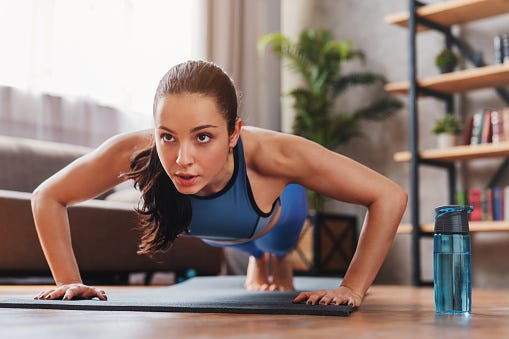
Push-ups are a basic exercise used in athletic training or during physical education classes or commonly in military physical training. The push-up is a multi-joint upper body exercise that can increase the upper body muscular push strength, shoulder strength, and performance of activities demanding a high level of relative strength. Push-ups are one of the basic and most common exercises for the human body. So it doesn’t need to bean athletic exercise so a normal human can’t do it. This is the most basic exercise that any beginner can do and it can extend up to the most advanced level of exercise that has been given to professional athletes to any high-performing gymnast.
Push-ups are great exercise for the chest, and also help tremendously for shaping and defining abs, triceps, shoulders, and torso.
Type of Exercise:-
One reason for the common utilization of the push-up exercise is due to the relative ease of learning the movement. Additionally, no equipment is necessary for the movement and the exercise can be modified for greater or lesser difficulty depending on the level of physical fitness of the patient. This adaptability is represented by variations that can be used to modify the basic exercise to alter the difficulty of the conventional exercise that requires that the hands be placed in a natural position under the shoulder, the back straight, head up, and lower limb straight using the toes as the pivotal point.
A push-up is a common calisthenics exercise performed in a prone position by extending and lowering the arms alternatively. Push-ups are a multi-joint upper body exercise that can improve an athlete’s overall upper body performance especially anterior shoulder strength, stability, and ability to produce high forces during pushing activities, such as gymnastics.
Push-up exercises are commonly used in shoulder rehabilitation, for the facilitation of proprioceptive feedback mechanisms, muscle co-contraction, and dynamic joint stability training.
Muscles involvement:-
· Pectoralis major
· Triceps brachii
· Scapular stabilizing muscles (serratus anterior)
· anterior deltoids, with ancillary benefits to the rest of the deltoids, coracobrachialis, and the midsection as a whole.
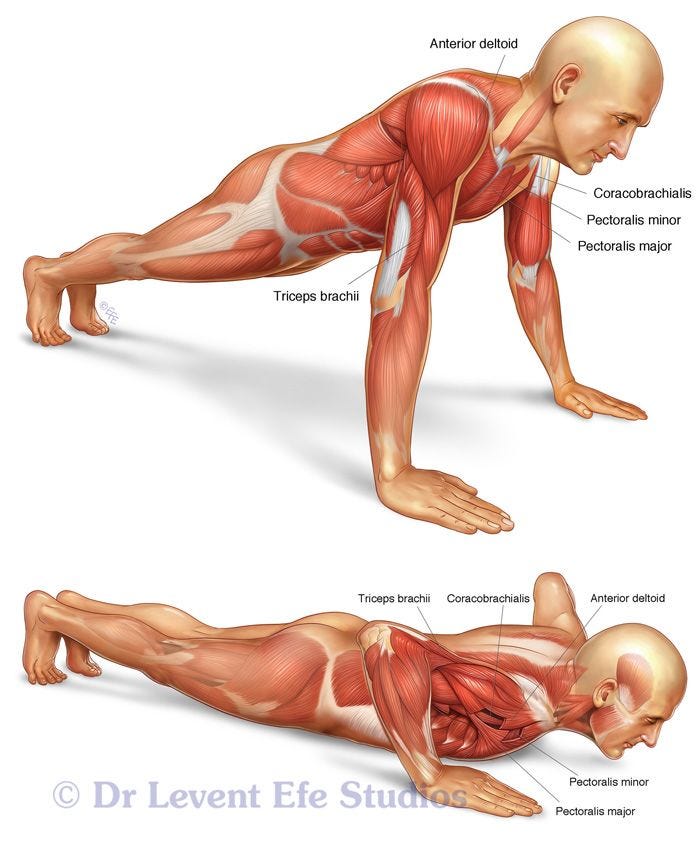
Benefits of the push-ups:-
· Push-ups can be performed at home without the expensive exercise equipment, which can save you money on a gym membership.
· Push-ups exercise regularly will strengthen, tone up the muscles and build major muscles, which can make daily activities easier and also improves sports performance.
· Push-ups also strengthen your core muscles, specifically your rectus abdominis and transverse abdominis.
· Push-up exercise stimulates metabolism and blood circulation, allowing you to burn more calories throughout the rest of your workout.
· Push-ups provide better results than many similar exercises. Athletes who include push-ups in their workout routine find that they can reach their fitness goals more easily than those following workouts that rely on other methods.
· Research studies had shown that performing push-ups can help increase testosterone levels, reducing the risk of developing osteoporosis.
· Push-ups increased metabolic rate. Push-ups use a large number of muscles at the same time; also your legs get into the action. A muscular activity means that your heart must work hard to pump blood to your working muscles, which is also caused by increasing your breathing rate.
· A set of push-ups will raise your metabolic rate while you are doing them and as you recover afterward, all of which intern contribute to healthy weight loss.
Execution:-
· The proper way of performing push-ups is by placing yourself in a horizontal position balancing on both the hands and toes while facing down, with arms extended, hands shoulder, width or more apart, and feet touching or slightly apart. This movement is excellent for the pictorials major and the triceps brachii.
· Inhale and bend the elbows to bring the rib cage close to the ground without arching the low back excessively.
· Push back up to complete arm extension and exhale at the end of each movement.
https://www.youtube.com/watch?v=IODxDxX7oi4
Push-up phases:-
There are two phases of the push-up movement:
1. Pushing phase
2. Lowering phase
Pushing Phase:-
During the pushing stage, motions are occurring at the elbow, shoulder, and scapular joints. In the elbow, extension occurs, powered mainly by the triceps brachia muscle. In the shoulder joint, horizontal adduction occurs. This motion occurs when the upper arms move horizontally toward the midline of the body. The pectoralis major, deltoids, biceps, and coracobrachialis muscles contract during horizontal adduction. At the scapular joint, scapular abduction occurs during the pushing phase. In this fashion, your scapulae move forward as they round the back of the ribcage, a motion also known as protraction. The serratus anterior and pectoral minor muscles power protraction.
Lowering phase:-
During the lowering phase, the same muscles that work in the pushing phase are active, but this time eccentrically. For example, in the elbow, flexion occurs as you lower your body, but with the triceps eccentrically allowing this motion. In the shoulder joint, horizontal abduction occurs, eccentrically controlled by the pectoral major, deltoid, biceps, and coracobrachialis muscles. At the scapula, scapular adduction, or retraction, occurs, which the serratus anterior and pectoral minor eccentrically control.
Types of the push-ups:-
The beginner who hasn’t tried doing push-ups at all should start with the wall push-ups, and as they progress can lower the level and increase their strength.
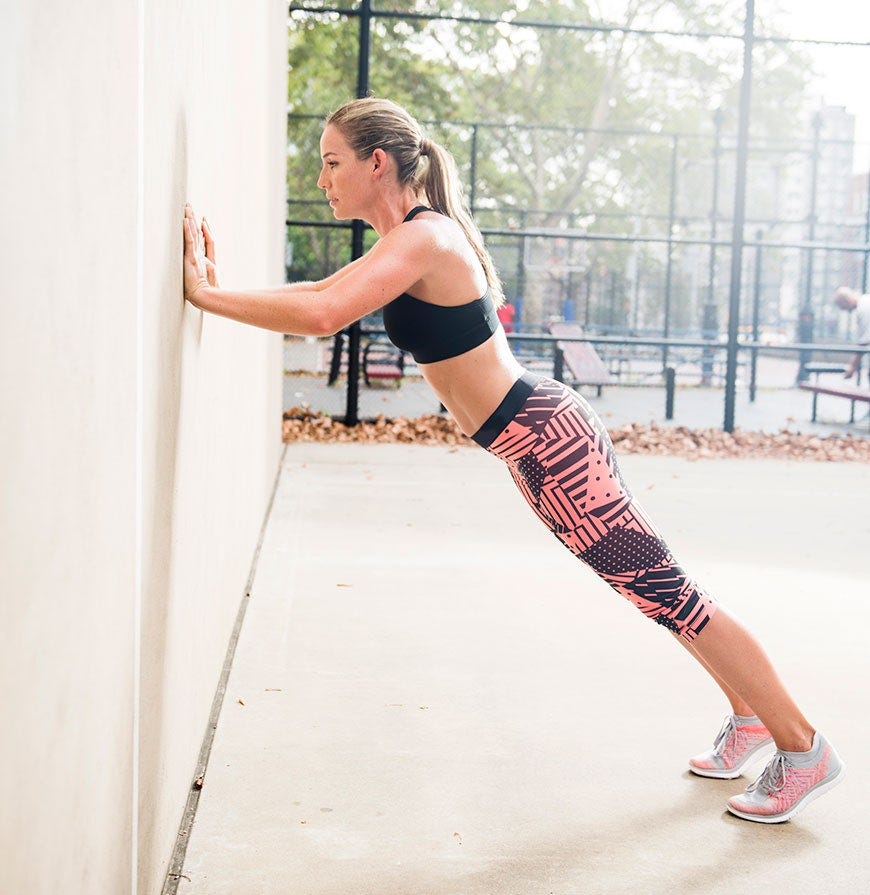
There are types of push-ups according to the palm grip which target the different muscles in isolation.
Palmar width was defined as the distance between the acromion in subjects. For each subject, the palmar width was considered the neutral position (100%), half the palmar width was considered the narrow position (50%), and 1.5 times the palmar width was considered the wide position (150%).
· Pectoralis minor, triceps brachii, and infraspinatus muscle activities are greater when push-ups are performed with the 50% palmar width.
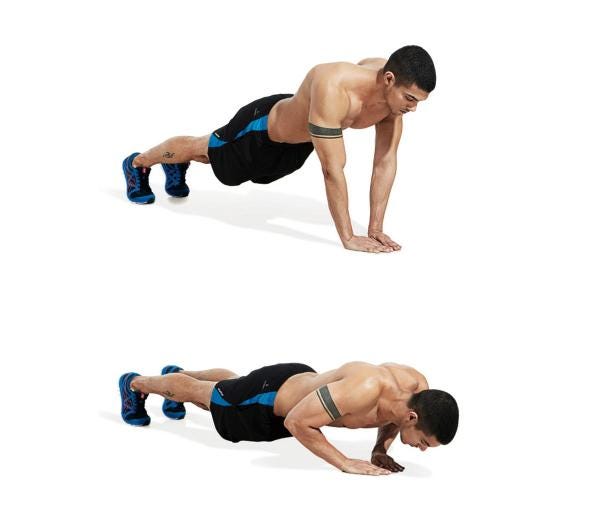
· Serratus anterior muscle activity is greater when push-ups are performed with the 150% palmar width.
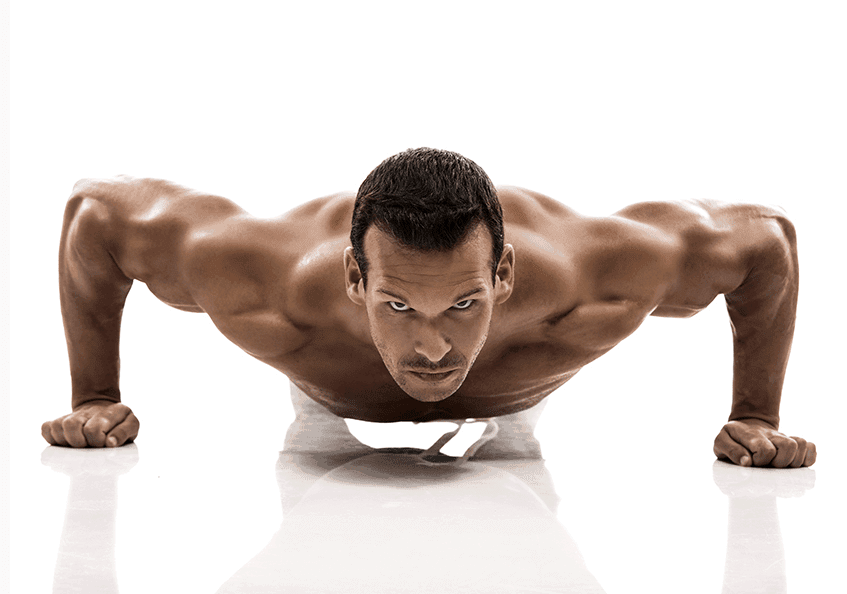
· Pectoralis major muscle activity is greater when push-ups are performed with the 50% and 100% palmar widths.
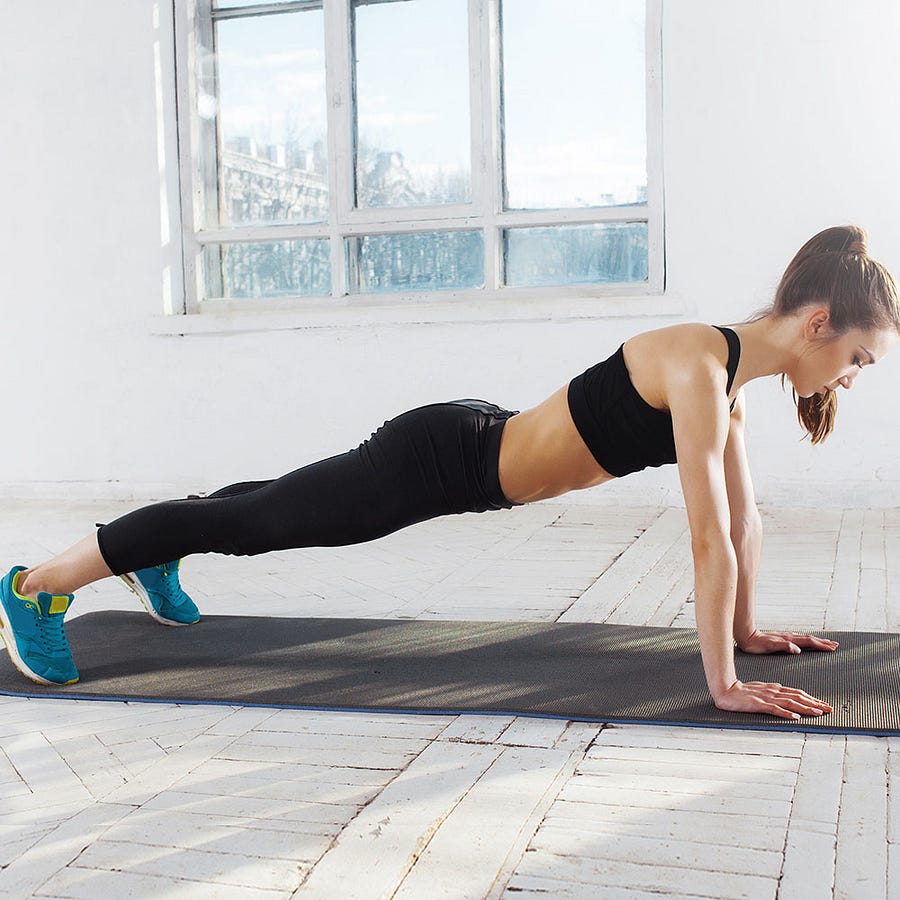
Variations:-
Standard push-ups
The participant’s hand placement is defined as the width equal to the distance between contralateral acromion processes, measured from the inside border of each hand, with hands placed under the shoulders in the beginning position, which is characterized by full elbow extension.
Pushing speed
Fast-speed push-up:7 push-ups/10s.
Regular-speed push-up:5 push-ups/10s.
Slow-speed push-up:4 push-ups/10s.
Push-up: The participant keeps the elbow joints in full extension and positions their hands, with a forearm in an axially non-rotated posture. The hand width is set to 1.5 times the shoulder width and the feet are shoulder-width apart in the initial posture.
Flexed knee (knees down): The participant kneels on the floor on hands and knees, then walks the hands forward until they can drop the hips. They stop when the body is in a straight line from the shoulders to the knees. Wrists are lined up beneath your shoulders. The participant crosses the ankles, with their feet in the air. Knee push-ups are performed in the same manner as the standard push-up except they are on their knees instead of their feet.
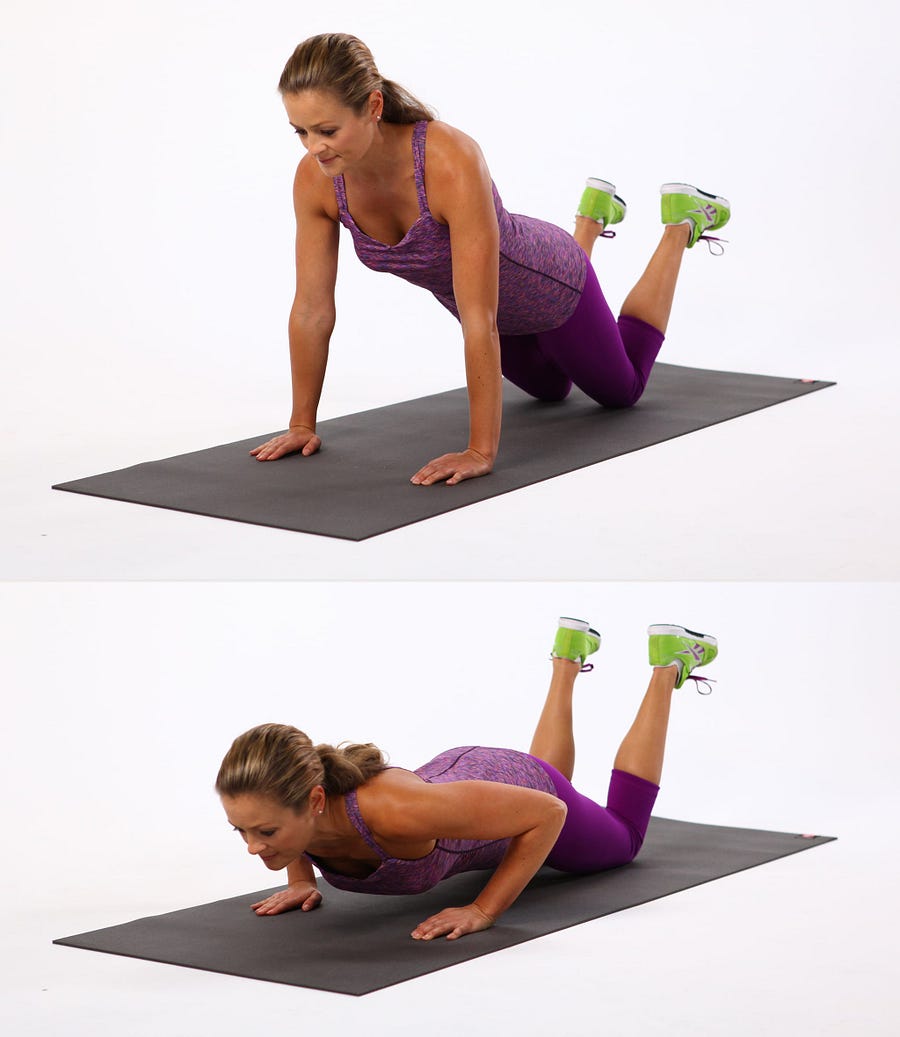
Prayer: The participant kneels with weight shifted primarily over the ankles and leans forward. The prayer position is illustrated to represent a standing upper extremity weight[1]bearing exercise in which minimal weight is placed through the upper extremities. Note that the participant places their middle fingers along two taped lines on the scales; these are used to standardize hand position based on individual acromial widths.
Quadruped: The participant is positioned with hands and knees on the ground with the shoulder flexed to 90°.
Internal position: Starting from the standard push-up position, with arms at the participant’s sides, and palms facing forward as a neutral reference position. The hands are internally rotated at 90°.
External position: Starting from the standard push-up position, with arms at the participant’s sides, and palms facing forward as a neutral reference position. The hands are externally rotated at 90°.
Neutral wrist: Starting from the standard push-up position, but with neutral rotation of the wrist and forearm, thus the knuckles were placed along the body of the participant.
PV: Two marks for the position of the feet at the anterior variant, at a distance of +30% of the arm-forearm length, relative to the marks of the feet in the normal position.
AV: Two marks for the position of the feet at the posterior variant, at a distance of -30% of the arm-forearm length, relative to the marks of the feet in the normal position.
Superior: The hands are placed 15 cm in the cephalad direction from the standard push-up position.
Inferior: The hands are placed 15 cm in the caudal direction from the standard push-up position.
Push-up position with feet elevated on a 30, 45, or 61 cm box: Push-up feet elevated. The participant maintains a push-up position with feet elevated at … cm, with elbows in full extension and the shoulder flexed to 90°.
Hands elevated on a 30 or 61 cm box: Push-up hands elevated. The participant maintains a push-up position with hands elevated at … cm, with elbows in full extension, and the shoulder flexed to 90°.
TRX® push-up-with the TRX straps hanging vertically. The participant adopts a push-up position with a handle in either hand. They perform a push-up in the same manner and at the same pace as the standard push-up.
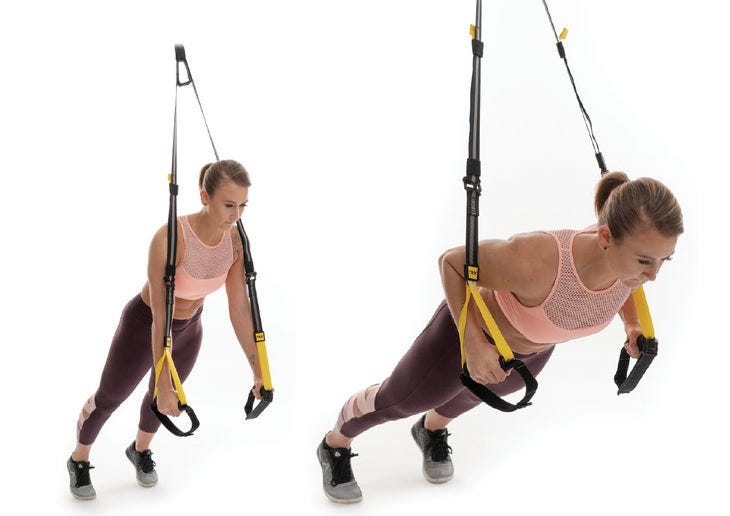
Clap push-ups: The participant lowers their chest down toward the force plates while maintaining a straight line with their body. After this phase, they forcefully and explosively push up to obtain an upper-body take-off. While in the air, they clap their hands together before landing back onto the force plates (or ground).
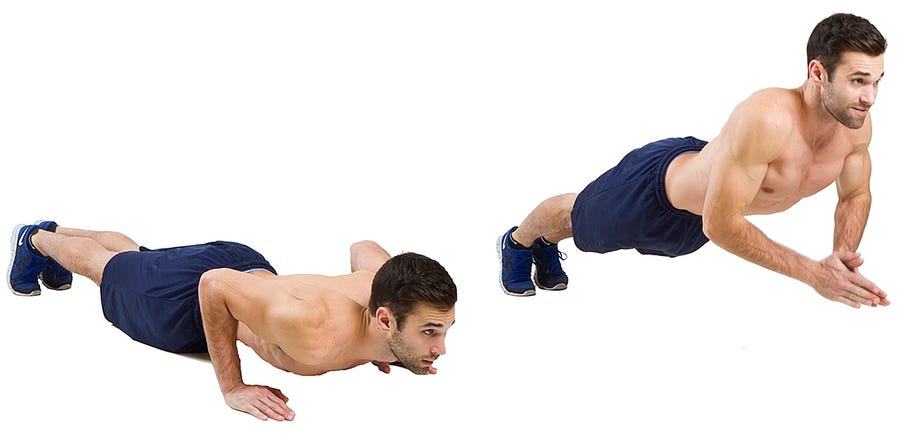
Box-drop plyometric push-ups: This position is similar to the clap push[1]ups. The participant lowers their chest down toward the force plates while maintaining their body in a straight line. Once peak depth is obtained, they explosively push up and, while in the air, maneuver their hands, such that they land on the blocks simultaneously. Upon contact with the blocks, the participant immediately and explosively performs another push-up off the blocks, landing with their hands in the starting position (on the force plates) to perform a subsequent repetition.
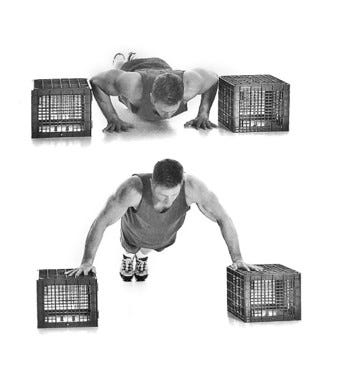
Countermovement push-up/explosive push-up: This is a push-up performed with a maximum speed of movement. From the starting position (standard position), the participant descends by flexing their elbows and extending their arms until the sternum is approximately 3cm from the floor. They immediately extend their elbows and flex their arms to return to the starting position.
Jump push-up: This is similar to a clap push-up but without the clap. From the starting position (standard position), the participant descends by flexing their elbows and extending their arms until the sternum is approximately 3 cm from the floor. They immediately extend their arms by taking advantage of the inertia generated to take their hands off the floor. They are told not to flex their elbows during the flight phase. Upon landing, the participant must reduce the impact as much as possible and continue the movement, thereby carrying out another complete push-up with a flight phase and landing. During the measurement, the participant must carry out two complete repetitions of the exercise (i.e., eccentric phase, concentric phase, flight phase, and landing phase) performed at maximal speed.

Fall push-up: Starting position: The participant kneels with bent arms (90°), extended elbows, and palms facing forward. Execution: The participant lets himself/herself fall forward and, at the moment of impact, tries to minimize the impact[1]force as much as possible. They must place their hands on the pre-set marks. They lower their bodies until the sternum is approximately3 cm from the floor. They then extend their elbows and flex their arms, thereby taking advantage of the inertia generated by these movements, to take their hands off the floor and attempt to return to the starting position.
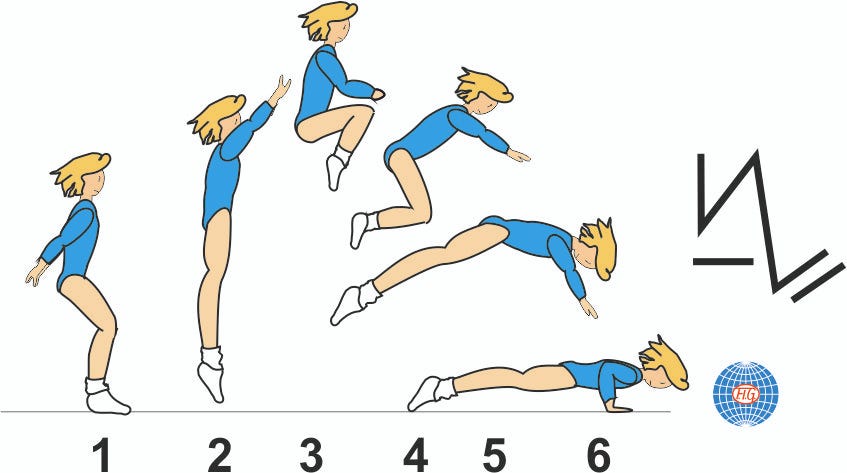
Standard countermovement push-up (SCPU): From the ‘up’ standard position, the participant descends by flexing their elbows until the elbows are flexed at approximately 90°. They immediately extend their arms to propel the upper body as high as possible. They are requested not to flex their elbows during the flight phase. Upon landing, the participant is requested to reduce the impact as much as possible and resume the starting position.
Standard squat push-up (SSPU): From the ‘up’ standard position, the participant descends by flexing their elbows until the elbows are at an angle of approximately 90°, and they maintain this position for about 1 s. When their body is completely stabilized in this motionless position, they then propel their upper body as high as possible without performing a countermovement.
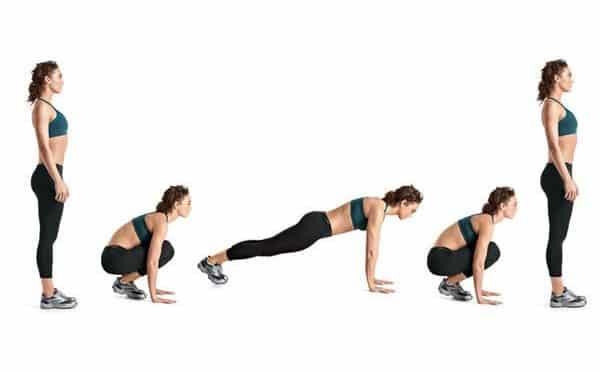
Kneeling countermovement push-up (KCPU): The KCPU is performed in the same manner as the SCPU, except with support from the knees instead of the feet (i.e., kneeling position).
Kneeling squat push-up (KSPU): The KSPU is performed in the same manner as the SSPU, except with support from the knees instead of the feet.
Drop-fall push-up: The participant kneels with shoulders in antepulsion (90°), with elbows extended and palms facing forward. The participant then lets himself/herself fall forward (under the effect of gravity). They lower their body until the elbows are flexed at approximately 90°. They immediately extend their arms in the same manner as the KCPU.
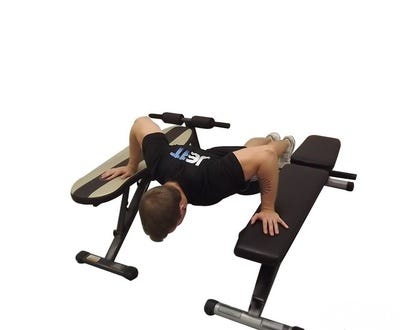
One-arm push-up: The participant maintains a one-arm push-up position with the elbow in full extension, the dominant shoulder flexed to 90°, and the non-dominant hand placed behind the back during testing. The participant is also asked to perform a one-handed push-up if able to do so.
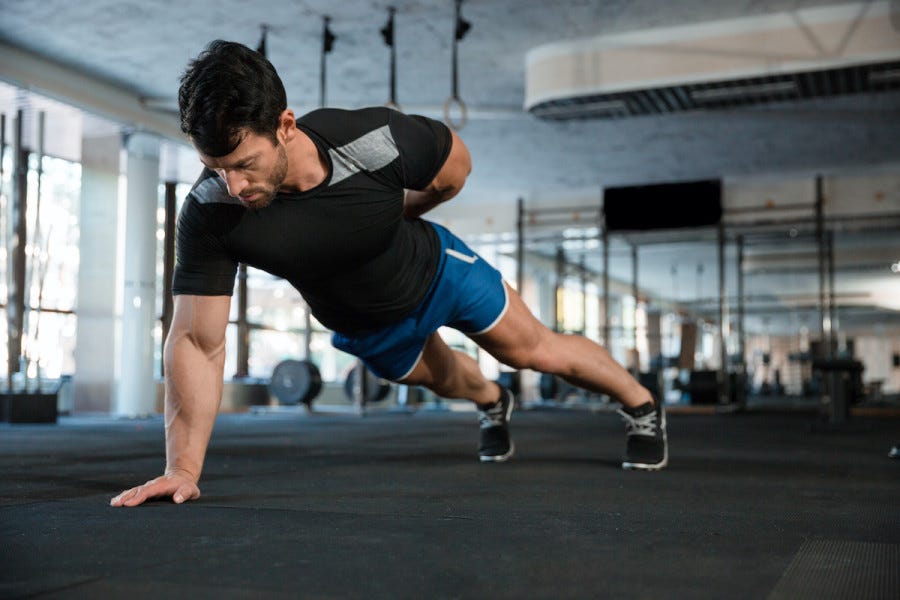
Tripod: The participant remains in the quadruped position, then flexes the non-performing shoulder to 180 degrees.
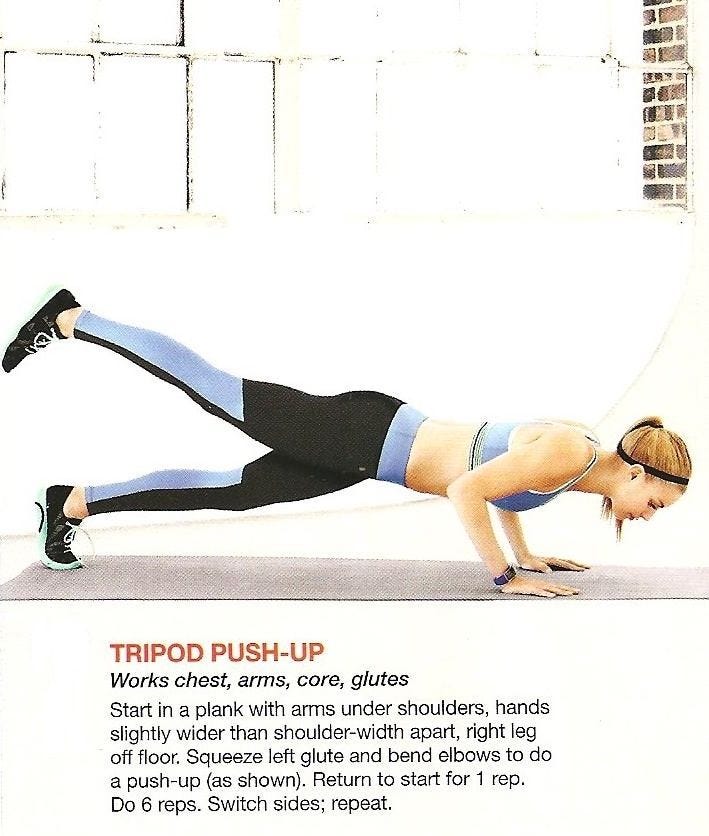
Pointer: The participant maintains the same position as the tripod position and extends the contralateral hip to 0°.
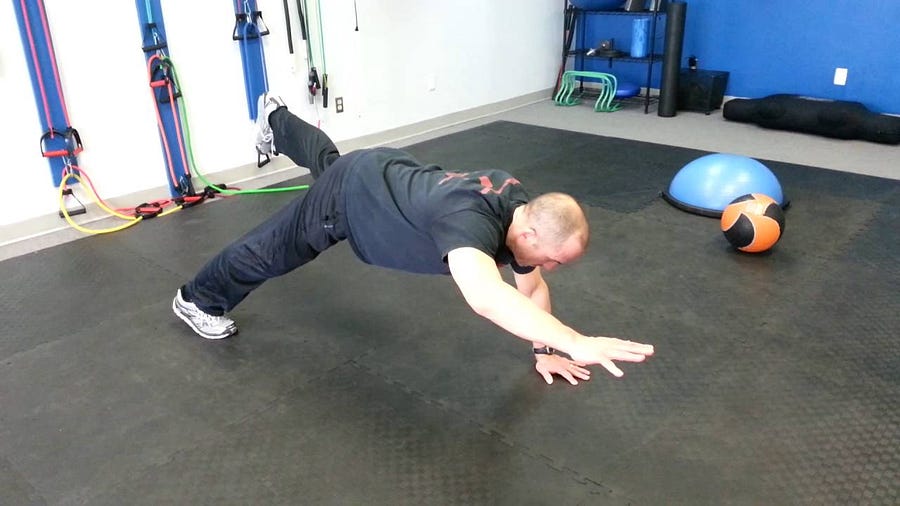
So, what are we waiting for? Let’s push ourselves and do push-ups.

Comments
Post a Comment